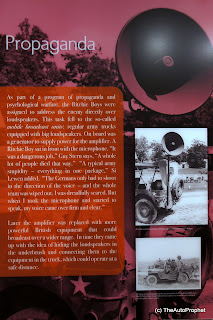1) 60MPG will increase jobs and profitability of the Big 3. Apparently, Citibank looked into a crystal ball and decided that the Big 3 market share and margins would increase with higher fuel economy vehicles. But the Big 3 rely on large vehicles, even today, for a lot of their profits. And jobs? That depends. If free trade with China continues, I see batteries and other components coming from China, which is a powerhouse in rare earth mining and raw materials processing. Look at it this way--in the rise of Li-Ion batteries for tools and laptop computers, where are all the parts coming from? China and Korea.2) 60MPG will not cost much, and will pay for itself. True, at $4/gal, a 60MPG car will pay back a sizeable premium in 3-4 years. However, the cost estimates of some the technology are pie-in-the-sky. What happens to li-ion battery costs if we start making millions of relatively huge car batteries? Are the greens ready to strip-mine China for lithium? What about the supply of rare earth metals for the powerful magnets needed by the motor/generators?3) Americans want 60MPG cars. Sure they do--but they don't want to pay much for them. As many surveys have shown, when you attach costs to highly efficient cars, interest drops off rapidly. Today, there are numerous highly efficient small and medium cars available. However, trucks and SUVs are still hot sellers. What Americans really want is free efficiency. They want large cars and cheap gas. They want fat free french fries.4) 60MPG is within easy reach, with off the shelf tech. Sure, for small and mid-sized cars. Give me a B/C platform and let me add a couple of thousand dollars in engine upgrades, more transmission gears, aluminum and high strength steel components. You'll have a 60MPG small car that costs $25,000. Great. Now, how do you do it for a mid-sized SUV or minivan? Or the Texas workhorse, the 1-ton pickup? Not so easy.
So what is the answer?A) Reducing vehicle weight will reduce overall safety, or add cost due to expensive countermeasures like additional airbags. It's physics. In a two car crash, the heavier car does better. Until all the old heavy vehicles are off of the road, about 10 years after the lightweight ones are introduced, the new vehicles will be at a disadvantage.B) High CAFE standards will increase up-front costs, and reduce sales. Suppose CAFE adds $4,000 in today's money to a typical family vehicle. Some people will respond by buying used, some will buy smaller or cheaper, and some will defer their purchase. Yes, you will save money down the road. But you have to pay the down payment and the taxes now. I agree with the AAM that sales volumes will be decreased. Fewer new car sales means fewer jobs in sales and manufacturing. However, there may be a renaissance in the old car repair industry, as people keep their old beaters longer.C) High CAFE standards will reduce consumer choice. How do you make a pickup truck which can pull a 10,000lb trailer, or haul 2,000lbs of bricks in its bed, which gets close to 60MPG? I don't think it is possible. Batteries are heavy and reduce payload. Beefy suspensions and large engines all work against efficiency. Even with efficiency improvements, in order to be able to sell pickup trucks, the automakers will have to get people to buy smaller cars to offset them. That's how CAFE works. The only way to do this is through price manipulation--either lose money on small cars, or jack up margins in large trucks. Since method one nearly killed the Big 3 once already, I suspect the answer is going to be method two. People who want muscle cars or pickup trucks will have to pay a lot more for them or do without. Instead, there will be strong pressure on consumers to pick small cars and range limited EVs. Products like high-performance sports cars may be very different under a 60MPG regime--slower, more expensive.
Increase performance and gas mileage with a performance chip. Performance Chips Direct sells ECU chips for trucks and cars.





















